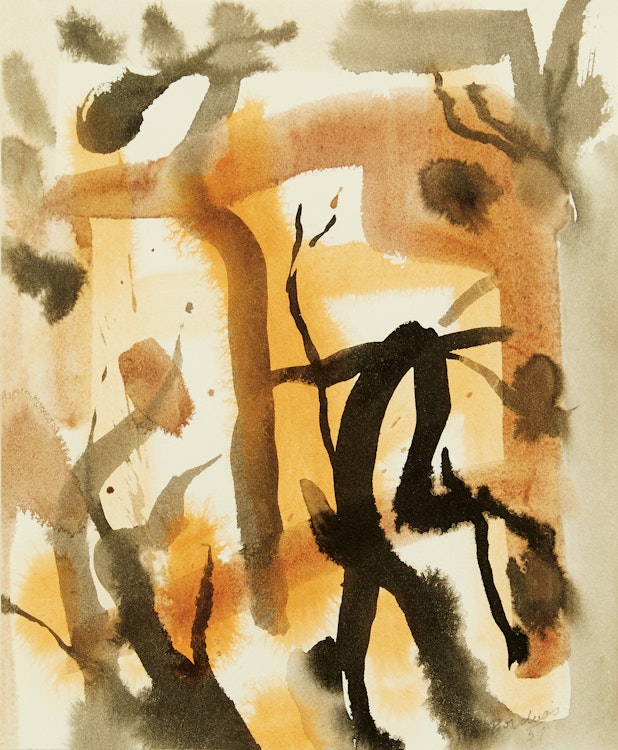Abstract Composition by Paul-Émile Borduas

Paul-Émile Borduas
Abstract Composition
watercolour
signed and dated 1951 lower right
10 x 8.5 ins ( 25.4 x 21.6 cms ) ( sheet )
Auction Estimate: $10,000.00 - $15,000.00
Price Realized $21,850.00
Sale date: May 25th 2017
Mr. Paul Duval, Toronto
Masters Gallery, Calgary
Private Collection, Vancouver
Share this item with your friends
Paul-Émile Borduas
(1905 - 1960) Les Automatistes, RCA
Leader of the Automatiste movement and author of Refus global, Paul-Émile Borduas is most well-known for his influence on avant-garde movements throughout Canada. Born in 1905 in Saint-Hilaire, Quebec, Borduas later went on to study art in Montreal and Paris. His formal education ended at age twelve, and Borduas became an apprentice for Ozias Leduc. Together they worked on church decorations in Quebec. In 1923, encouraged by Leduc, Borduas registered at the École des beaux-arts in Montreal. After graduation, Borduas trained as a church decorator in Rambucourt, France.
Upon his return to Canada in 1930, Borduas struggled to secure church decorating contracts due to the economic situation during the Great Depression. To make ends meet he taught drawing at primary schools in Montreal. In 1937, he began teaching at the École du meuble in Quebec. The next year he discovered Surrealism and associated writings by André Breton. Borduas was then inspired to paint in a similar style as the European Surrealists––without a preconceived idea and automatic, in a sense. While teaching at the École du meuble, Borduas met similarly minded young Quebec-based artists. Together they formed a group that became known as the Automatistes. The group discussed socio-political ideas and participated in public forums, debating modern painting and non-representational art. In 1946, the group exhibited for the first time together in New York City. Later that year they had a show in Montreal.
In 1948, the Automatistes decided that they should accompany their next exhibition with a manifesto. Borduas wrote the main text of the manifesto, Refus global, and other members of the group facilitated. Four hundred copies of Refus global were printed and were for sale at the Librairie Tranquille in Montreal during their exhibition. The manifesto denounced parochialism and nationalism in the Quebec government. The manifesto stated that there should be further separation from the church and state, especially for the arts. One month after the manifesto’s publication, Borduas was suspended from his position at the École du meuble. He supplemented his income through selling small-scale watercolours and teaching drawing to the children of Saint-Hilaire. It was at this time that Borduas and his wife separated, and she took their children. In 1953, Borduas began the process of immigrating to the United States by renting a studio in Provincetown on Cape Cod, Massachusetts during the summer. Later in 1953 he moved to New York City and exhibited at Georgette Passedoit’s gallery. Later he was represented by the Martha Jackson Gallery.
In 1955, Borduas moved to Paris. Jackson put Borduas in touch with Parisian critics and abstract painters. In Paris, he participated in Spontanéité et réflexion, an exhibition organized by art historian Herta Wescher, held at the Galerie Aranud in 1959. He showed Composition 37 (1958), in the exhibition, which received special mention by Pierre Restany––an influential critic. Later in 1959, Borduas had his first solo exhibition in Paris at the Galerie Saint-Germain. Borduas died of a heart attack in 1960 at his studio on the rue Rousselet in Paris.
Literature Source:
François-Marc Gagnon, “Paul-Émile Borduas: Life and Work,” Art Canada Institute, Toronto, 2014 (https://aci-iac.ca/art-books/paul-emile-borduas)
We extend our thanks to Danie Klein, York University graduate student in art history, for writing and contributing this artist biography.

